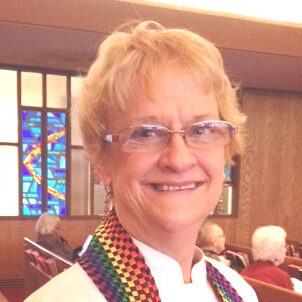What is a Narrative Budget?
Every congregation has a Line Item Budget. This budget form reports income and expenses, line by line, so the church’s committees can monitor their activities internally, making sure that expenditures don’t exceed income by categories throughout the year.
But a Line Item Budget is not a motivating tool! It is not inspiring (even to those few who can read and understand financial figures). It does not describe mission, performance or outcome. It describes the “how” of local church finances – not the “why.”
A Narrative Budget, on the other hand, explains the “why” of the ministries we support financially and otherwise. Instead of answering “How much?,” it answers the question, “So what?” The Narrative Budget does this by clustering the cost of ministries, buildings and personnel in such a way that both church members and visitors can understand what all the money, time and effort are for – in plain language, not in numbers.
Using this narrative approach, the congregational leaders “creatively clump” the church’s work into three to five (at the most) dimensions. They may divide it by areas of the congregation’s mission statement, by type of ministry, by core values, or by ministry goals. For example, in times past, San Francisco Temple UMC has used Meet God / Mature in Faith / Mobilize to Mission. Vacaville St. Paul’s UMC has used Open Hearts / Open Hands / Open Minds. Sacramento First UMC has used Worship and Spiritual Growth / Fellowship and Membership Care / Local Community Outreach / Our Connection.
Under each dimension, a short paragraph (or even series of bullet points) describes current and projected ministries that personal commitment, participation and financial support will make possible. Beside each broad category, one financial figure indicates the cost of this priority as a whole.
When you’re putting together a Narrative Budget, one thing is key. Staff members are not overhead! Their time, energy and abilities are part of what accomplishes the mission. Likewise, the buildings and grounds are not overhead, either. They facilitate your congregation’s ministry. So a Narrative Budget divides up the cost of salary and pensions for the staff according to the percentage of time they spend in each of the overarching categories. (A two-week or one-month time study usually answers what percentages should go where.)
The same goes for the facilities: divide the total cost by the percentage of time they are used for each ministry dimension, from worship and internal congregational events to community group use. In many Narrative Budgets, churches also divide up the Apportionments, District Askings and other benevolences, by category, according to the overall clusters chosen.
Each congregation’s Narrative Budget will look a little different, according to its church personality and ministry priorities. It may even coordinate the format to fit with Quest for Quality (as did South Reno UMC for 2003) or some other systems approach. The point is to communicate financial needs and priorities in a way that makes sense to the members of our congregation, to answer the “Why” and the “So what?” of our ministries in a way that people readily understand.
Then when the stewardship financial campaign is completed, we can drop the financial figures off the Narrative Budget sheet. This leaves us with a ready-made tool for visitors and community residents when they ask, “Just what does your church do, anyway?”
Betsy Schwarzentraub
See also: Creating a Narrative Spending Plan, Narrative Budget Twin Towers 2008, Narrative Budget First XXX Church 2009


